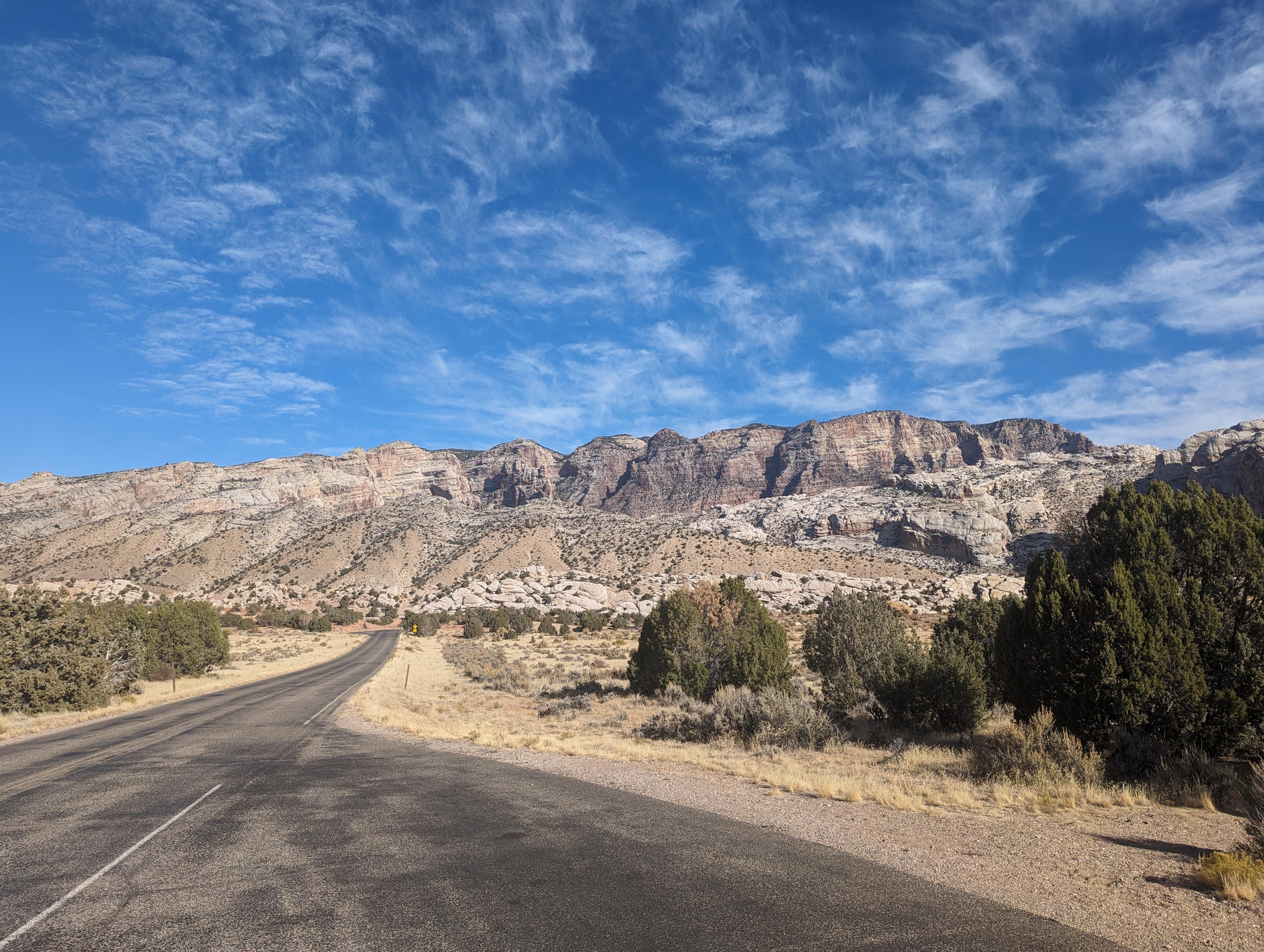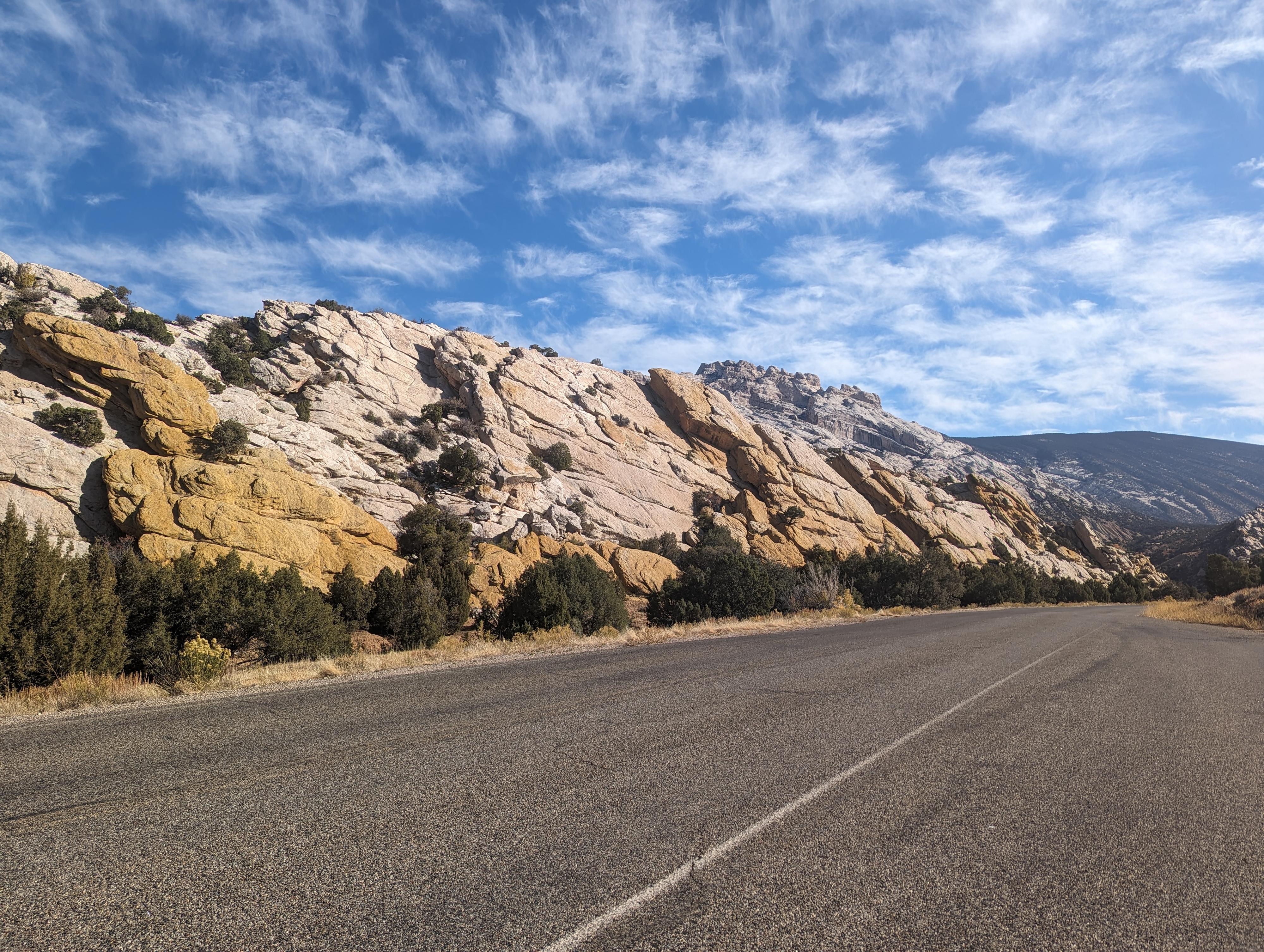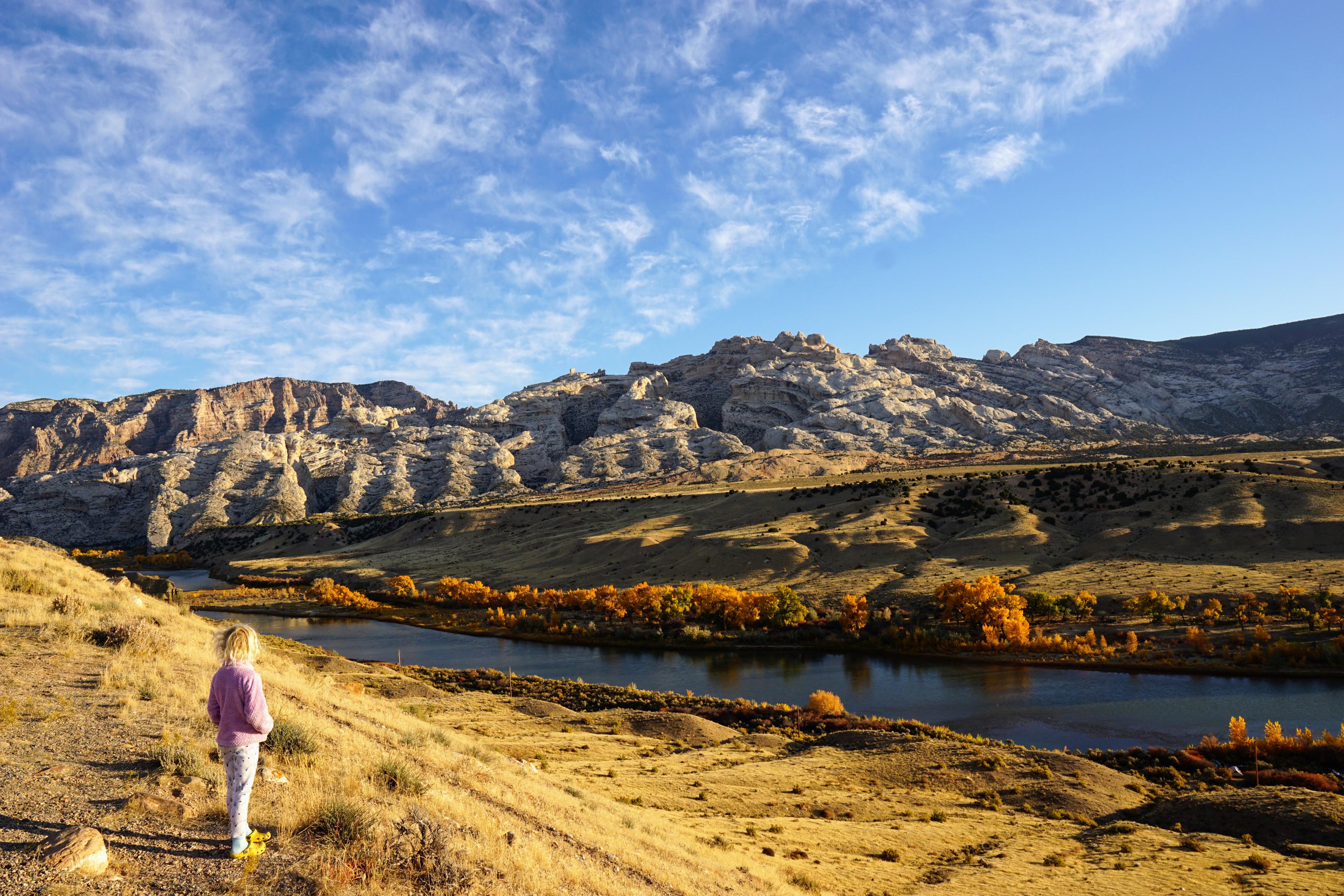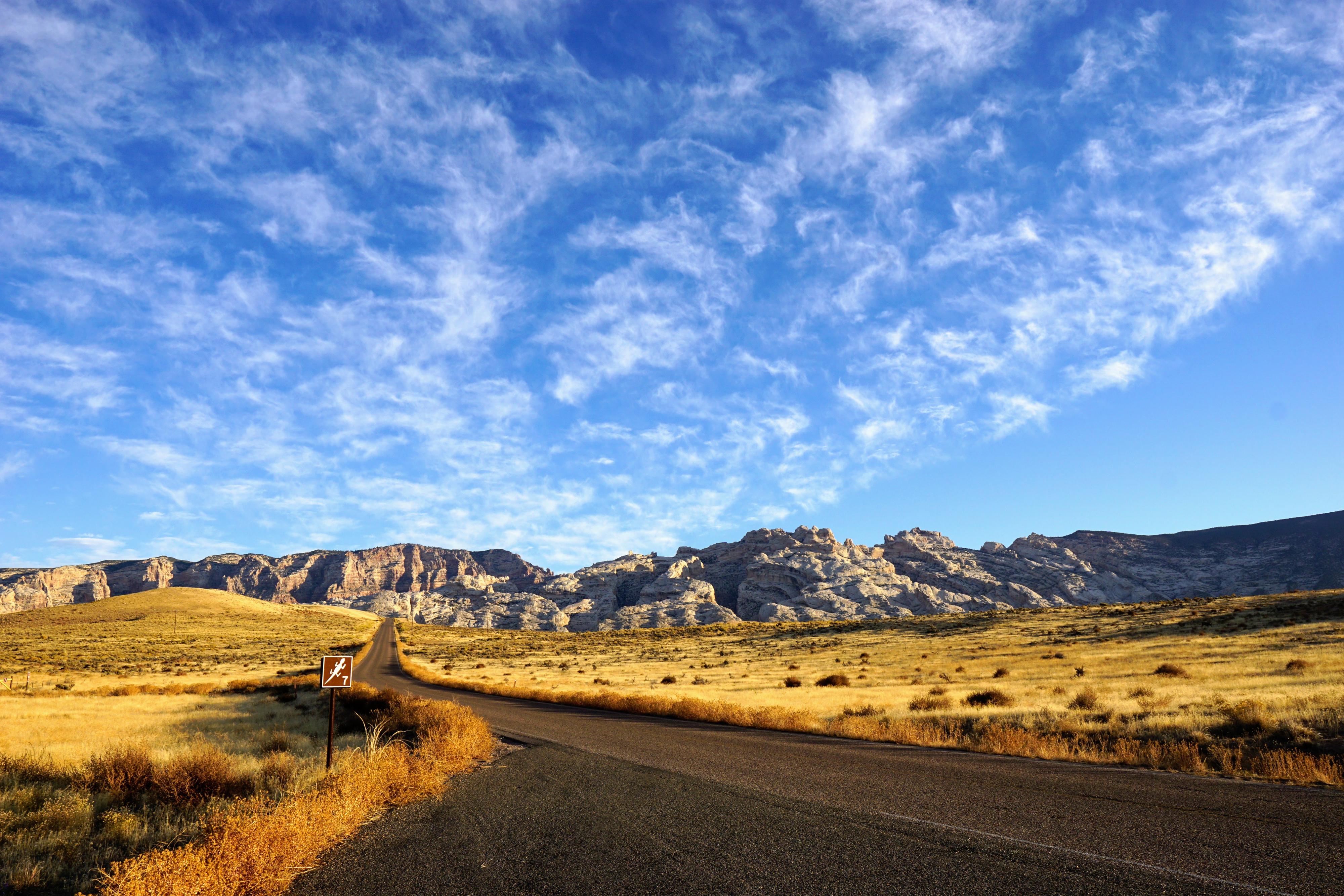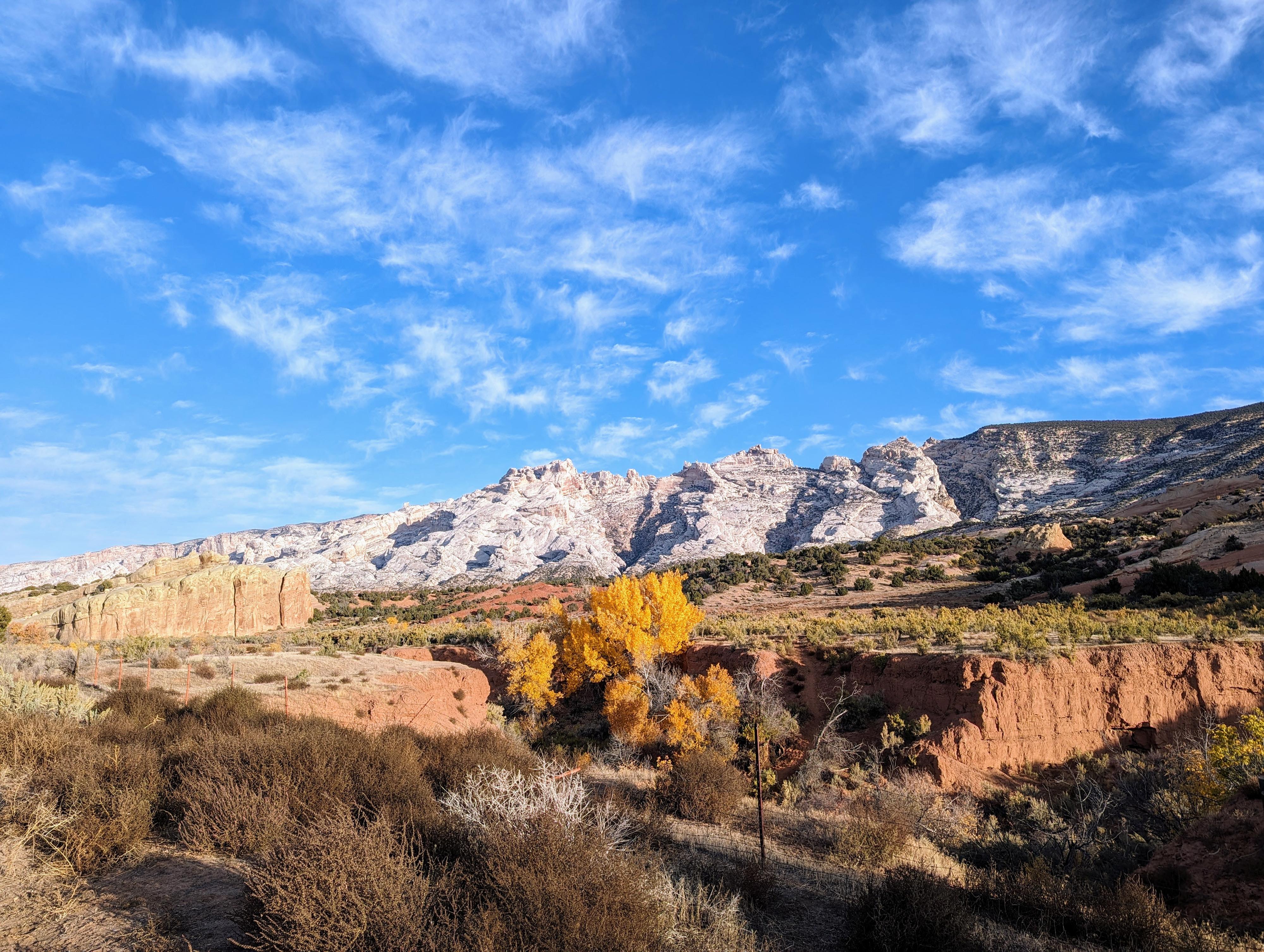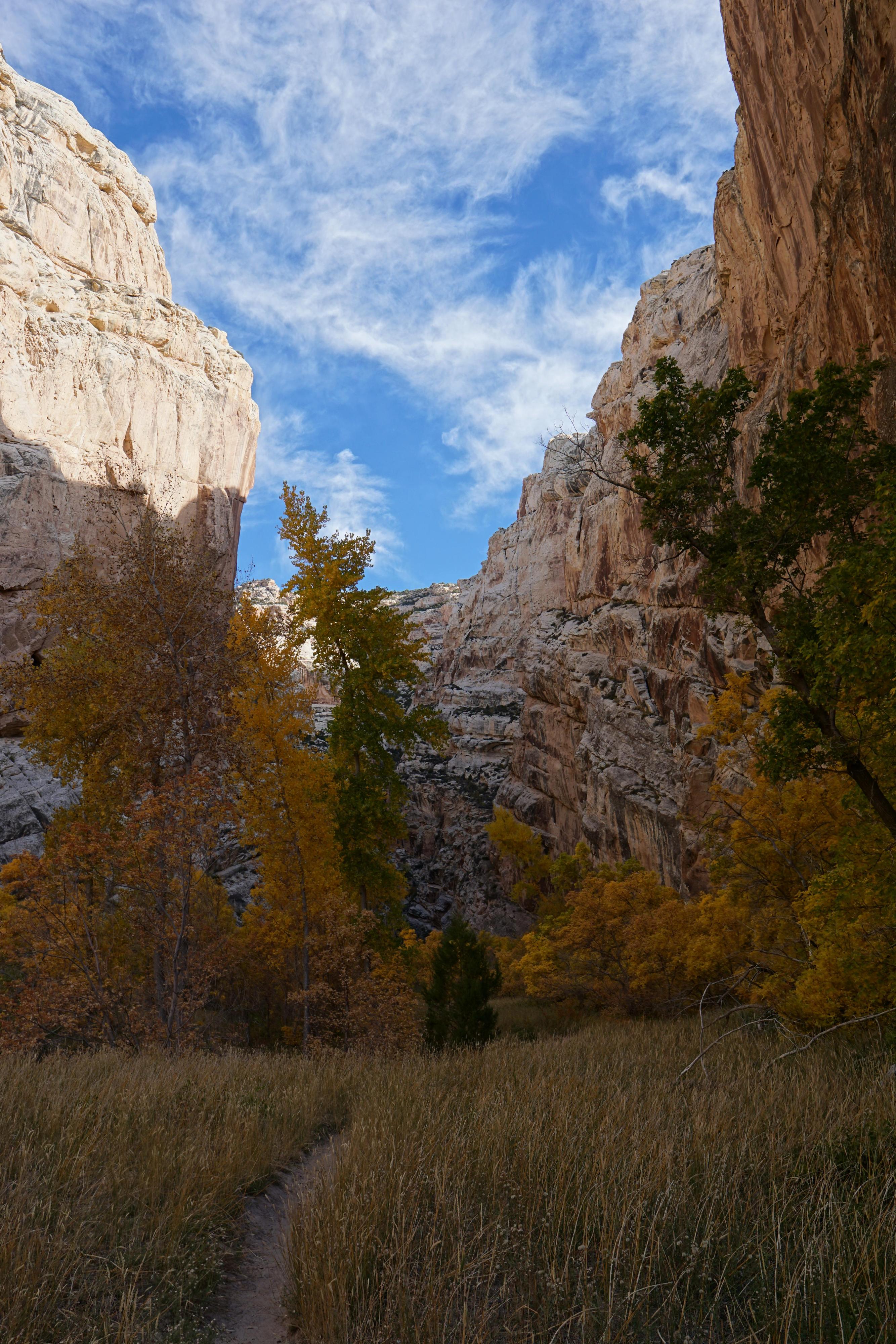
 Tour of Tilted Rocks
Tour of Tilted Rocks
Dinosaur National Monument
Overview
|
Wed 44 | 18 |
Thu 42 | 24 |
Fri 47 | 28 |
Sat 47 | 28 |
Sun 48 | 28 |
| View Full Weather Details | ||||
|
Wed 44 | 18 |
Thu 42 | 24 |
Fri 47 | 28 |
Sat 47 | 28 |
Sun 48 | 28 |
| View Full Weather Details | ||||
Dinosaur National Monument, located on the border of Utah and Colorado, is a renowned paleontological site that boasts a rich history dating back to its discovery in the early 20th century. The monument's origins can be traced to 1909 when paleontologist Earl Douglass, working for the Carnegie Museum of Natural History, stumbled upon a treasure trove of dinosaur fossils in the rugged canyons of the area. The site quickly garnered attention from the scientific community and the public, leading to the establishment of Dinosaur National Monument in 1915. This designation aimed to protect the remarkable fossil beds and the diverse range of dinosaur specimens found in the region.
Over the years, Dinosaur National Monument has become a hub for scientific research, allowing researchers to uncover a wide variety of dinosaur species, including Allosaurus, Diplodocus, and Stegosaurus. The monument also features a visitor center and numerous hiking trails, providing visitors with a chance to explore the stunning landscapes of the Yampa and Green River canyons, and to gain insight into the prehistoric past.
My recommendation for a great introduction to Dinosaur National Monument is to visit the visitor center and quarry, then do this route, the Tour of the Tilted Rocks. This route is a mix of roadside stops and short hikes that visit many remarkable sights, all with only a few hours to a day's worth of time needed.
Getting There
From Vernal, head south on U.S. Hwy 40 E. Follow US-40 for about 12 miles to UT-149. Turn left onto UT-149, signed for Dinosaur National Monument and follow it for about 6 miles to the visitor center which is inside the park.
Route
Rock art and historic sites are fragile, non-renewable cultural resources that, once damaged, can never be replaced. To ensure they are protected, please:
- Avoid Touching the Petroglyphs: Look and observe, BUT DO NOT TOUCH!
- Stay on the Trails: Stay on the most used trails when visiting sites, and don't create new trails or trample vegetation.
- Photography and Sketching is Allowed: Do not introduce any foreign substance to enhance the carved and pecked images for photographic or drawing purposes. Altering, defacing, or damaging the petroglyphs is against the law -- even if the damage is unintentional.
- Pets: Keep pets on a leash and clean up after them.
- Artifacts: If you happen to come across sherds (broken pottery) or lithics (flakes of stone tools), leave them where you see them. Once they are moved or removed, a piece of the past is forever lost.
The route starts at the visitor center. Once you leave the visitor center and turn east toward the interior of the park, reset your odometer. For the most part, all numbered sites have a sign, but on my visit at least a couple of these were missing.
Site #1 - Swelter Shelter (0.9 miles into the tour)
This short hike visits one of the monument's oldest-known sites for human occupation. Some tools found at this site date back 7,000 years! These ancient peoples are referred to today as the Desert Archaic culture.
The rock art, pictographs and petroglyphs, have been dated back to about 1,000 years ago and were likely done by the Fremont people.
Approximately a thousand years ago, the Fremont people lived in this area. They left evidence of their presence both in the form of petroglyphs, patterns chipped or carved into the rock, and pictographs, patterns painted on the rock. The designs here at Swelter Shelter include both petroglyphs and pictographs.
The Fremont gathered and ate native plants, including pinyon nuts, berries, and cactus fruits. They hunted mule deer, bighorn sheep, small mammals, and birds. The Fremont moved according to the availability of water and food, occupying their dwelling sites for only part of the year.
The Fremont also farmed, growing corn, beans, and squash. For at least part of the year, cultivating these plants allowed a more settled life, which may have given the Fremont the time needed to create these elaborate rock designs.
Site #2 - Sound of Silence Trailhead (1.8 miles into the tour)
This is the trailhead for the three mile Sound of Silence trail.
2.65 miles - Major junction. Turn left toward Split Mountain Campground and Boat Ramp.
Site #3 - Split Mountain View (2.8 miles into the tour)
This stop is to take in the rugged view of Split Mountain in the distance.
Site #4 - Geology View (3.1 miles into the tour)
The views from here show the many ridges of stone that one crossed Split Mountain. Underground forces pushed up the rock layers here eons ago, creating an irregular dome that erosion wore away into the rugged scenery seen today.
Site #5 - Geology View (3.5 miles into the tour)
Closer views of Split Mountain. The area was once covered deeply in dirt and sediment. Over time, the Green River wore its path through the mountain, and other erosional forces shaped the slopes into the dramatic scene that it currently is. It is about 1/2 mile further to drive to the Split Mountain Campground and boat ramp. The boat ramp is a great area to walk to the river or hike part of the Desert Voices Trail that starts at the boat ramp. There are also restroom facilities here if needed. Turn around and head back to the main Monument road when done.
4.6 miles - Turn left when you reach the main Monument Road to continue the tour.
Site #6 - Chew Ranch View (5.8 miles into the tour)
Hands down, one of my favorite views in this part of the Monument. Particularly in the fall, when the leaves are changing along the river, this is a dramatic scene. Split Mountain, across the river, the tree-lined Green River Campground below, and the fields of the Chew Ranch in the distance to the southwest, it is a great view.
Site #7 - Morrison Formation View (6.5 miles into the tour)
From the Monument Sign:
What was once a semi-arid landscape with broad mudflats, intermittent rivers and scattered ponds is now preserved as multi-colored mudstones and sandstones known as the Morrison Formation. This fossil-rich layer of sedimentary rock was first studied near the town of Morrison, Colorado. Fossil evidence from across the western United States provides clues to what the Morrison environment was like 146 to 158 million years ago.
Site #8 - Placer Point (7.2 miles into the tour)
A short dirt road on the right leads to the Green River and Placer Point. This was the site of a dredging operation to dredge gold from the Green River in the early 1900s. The operation was not successful and soon ended.
From the Monument Sign:
Placer mining took place intermittently just downstream from this point between 1905 and 1942. While some gold was removed, it was never enough to make the effort profitable. The mining equipment was eventually removed, and the area returned to a more natural state when it became part of Dinosaur National Monument. Today, people value this location for many reasons beyond its potential for gold.
Site #9- Chew Ranch and Rock Art Panel (7.2 miles into the tour)
The monument road crosses through the private Chew Ranch through this section, after crossing the bridge over the Green River. On the right, just after the bridge, is a dirt road on the right. This dirt road is private, but the private owner allows access to cross their property on this dirt road to the BLM land about a 0.25 of a mile beyond. Just inside the BLM land is a large cliff face on the left that is the site of a petroglyph panel and more modern graffiti. It is worth the short side trip. The road is generally good, but if you are in a very low clearance sedan, you may want to walk from pavement.
Site #10 - Turtle Rock (9.4 miles into the tour)
The rock on the left is often referred to as Turtle Rock. It is easy to see why! The rock is the fast weathering Entrada Sandstone, the same rock prominent in southern Utah for creating arches and hoodoos.
Site #11 - Blue Mountain Junction (10 miles into the tour)
A major junction is reached. Go left here, as the road turns to dirt. From here on, the road is dirt, but typically excellent and should be passable by all vehicles in most conditions. Right at this junction is the rough Blue Mountain road that requires four-wheel drive and climbs to the top of Blue Mountain.
Site #12 Elephant Toes Butte View (10.3 miles into the tour)
To the right, in the distance, is an eroded Nugget Sandstone feature that resembles Elephant Toes. The feature was created when sand dunes millions of years ago became compressed into rock, then weathered.
Site #13 Rock Art (10.7 miles into the tour)
This is the first of two impressive rock art sites. A short trail heads up to view the rock art closer-up. The panels are Fremont in origin, like the Swelter Shelter. The exact meaning and story the panels are trying to tell has been lost to time, but certainly many of the images are easily identifiable, like big horn sheep.
Site #14 Lizard Panel (10.9 miles)
This site, a short distance from site #13, is one of my favorite petroglyphs panels in Utah. A short, though somewhat steep and rocky trail leads up to the cliff band and a closer view and several excellent petroglyph panels. The lizards are unique, I have never seen a similar design in Utah, and it is striking and expertly done. A really neat panel to visit. Be sure to look for the flute player panel that is partially eroded to the right of the lizards. It is another of my favorites.
The trail continues along the base of the cliff to visit a few more glyphs before ending about where the cliff makes a turn to the north.
About a 1/4 of a mile past site 14, keep an eye out for a petroglyph on the left, across the wash. This isn't signed, and there isn't a pullout, so it is often overlooked.
Site #15 Morris Cabin Area (11.8 miles from the start of the tour)
The final stop on the auto route, and the end of the road, is the Josie Morris Cabin area.
The Josie Morris homestead is at the end of the road, with a pond, old cabin, and other remnants to wander around and visit. There is a picnic table here as well, making it a great lunch spot.
There are two short trails that leave from this trailhead. The first, Box Canyon, leaves from the trailhead and heads directly north into Box Canyon. It is about 1/2 mile roundtrip depending on when you turn around.
The second, Hog Canyon, is reached by walking through the homestead and continuing past the pond. This trail is about 1.25 miles roundtrip, depending on where you turn around. The trail heads east for a few minutes before heading north up Hog Canyon, the first canyon east of the homestead. Hog Canyon was named because Josie kept hogs in the canyon. It is a really lovely hike up a deep walled canyon. Of the two, it is my favorite and typically has a small stream bubbling along its floor. Fall colors can be excellent in Hog Canyon.
Josie's story takes on added significance due to the establishment of Dinosaur National Monument in 1915, which enveloped her homestead. As the monument expanded, her cabin stood as a testament to the resilience of those who carve out a living in the untamed wilderness.
| Visitor Center Junction |
12T 643494E 4477572N 40°26'11"N 109°18'29"W |
| Site #1 - 0.9 miles - Swelter Shelter Turnout |
12T 644869E 4477628N 40°26'12"N 109°17'31"W |
| Site #2 - 1.8 Miles - The Sound of Silence |
12T 646217E 4477701N 40°26'14"N 109°16'34"W |
| Site #3 - 2.8 Miles - View |
12T 647573E 4477956N 40°26'21"N 109°15'36"W |
| Site #4 - 3.1 miles |
12T 647644E 4478256N 40°26'31"N 109°15'33"W |
| Site #5 - 3.6 Miles |
12T 648071E 4478334N 40°26'33"N 109°15'15"W |
| Split Mountain Campground |
12T 648142E 4478585N 40°26'41"N 109°15'11"W |
| Site #6 - 5.8 Miles |
12T 648585E 4476156N 40°25'22"N 109°14'55"W |
| Site #7 - 6.5 miles |
12T 648613E 4475039N 40°24'46"N 109°14'54"W |
| Site #8 - 7.2 miles |
12T 649387E 4474485N 40°24'27"N 109°14'22"W |
| Site #9 - 7.6 miles - Chew Ranch |
12T 650015E 4474732N 40°24'35"N 109°13'55"W |
| Chew Ranch Panel |
12T 650408E 4474666N 40°24'33"N 109°13'39"W |
| Site #10 - 9.4 miles |
12T 651818E 4476272N 40°25'24"N 109°12'37"W |
| Site #11 - 10 Miles |
12T 652718E 4475871N 40°25'10"N 109°11'60"W |
| Site #12 - 10.3 miles |
12T 653101E 4475804N 40°25'08"N 109°11'43"W |
| Site #13 - 10.7 miles |
12T 653676E 4475852N 40°25'09"N 109°11'19"W |
| Site #14 - 10.9 miles |
12T 653923E 4475967N 40°25'12"N 109°11'08"W |
| Panel Near Road |
12T 654256E 4476003N 40°25'13"N 109°10'54"W |
| Site #15 - 11.8 Miles |
12T 654858E 4476617N 40°25'33"N 109°10'28"W |
| Morris Ranch |
12T 654854E 4476557N 40°25'31"N 109°10'28"W |


